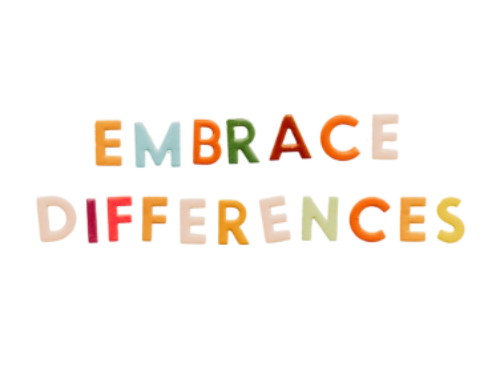The effects of bullying and harassment reach way beyond the individual.
Bullying in the school playground may be easy to see and describe, but adult bullying and harassment can be subtle, leaving people questioning, “Is it me, am I being over-sensitive?”. Is it banter or bullying? Humour or harassment? Maybe it’s overt, or maybe you just ‘feel’ you’re being treated differently to others.
We’ve written before about micro-inequities in the workplace, but when does it become bullying and/or harassment… and what should you do?
What is bullying?
ACAS describes bullying as follows:
Although there is no legal definition of bullying, it can be described as unwanted behaviour from a person or group that is either:
- offensive, intimidating, malicious or insulting
- an abuse or misuse of power that undermines, humiliates, or causes physical or emotional harm to someone.
The bullying might:
- be a regular pattern of behaviour or a one-off incident
- happen face-to-face, on social media, in emails or calls
- happen at work or in other work-related situations
- not always be obvious or noticed by others.
Examples of bullying at work could include:
- someone has spread a malicious rumour about you
- someone keeps putting you down in meetings
- your boss keeps giving you a heavier workload than everyone else
- someone has put humiliating, offensive or threatening comments or photos on social media
- someone at the same or more junior level as you keeps undermining your authority.
What is harassment?
ACAS’ description of harassment is:
Harassment is when bullying or unwanted behaviour is about any of the following ‘protected characteristics’ under discrimination law (Equality Act 2010):
- age
- disability
- gender reassignment
- race
- religion or belief
- sex
- sexual orientation.
Harassment because of pregnancy or maternity is treated differently and could be direct discrimination.
The effects of bullying and harassment reach way beyond the individual
The effects of bullying and harassment aren’t limited to the individual in question – the impact extends into teams and the entire company. The effects include (but are not limited to):
- Individual: physical and psychological health problems, including high blood pressure, mood changes, panic attacks, stress and ulcers.
- Team: low morale, poor performance and poor productivity.
- Company: Increased staff turnover, absenteeism, legal claims and damage to reputation.
What should you do if you feel that you’re being bullied or harassed?
1. Firstly, start to note such situations. It’s much easier to tackle when you have factual evidence and helps to construct feedback for discussion.
2. If you feel able, talk to the person in question – as soon after an incident as possible. Keep in mind that it is possible that their behaviour may not be deliberate, and they may not realise how it has affected you. Stay calm and be polite. State the problem, state the consequences and offer a solution. Here are a couple of examples:
a) If someone is yelling at you in a meeting: “Jo, your voice is getting louder and you’re starting to shout. When you get louder, it makes collaboration difficult, and it shuts down ideas. Moving forward please could we all agree to keep our voices down and listen to each other so that we can all contribute easily to the discussion?”
b) If you are given unfair/unattainable tasks and deadlines: “Alex, given the volume of data, it isn’t possible to analyse and report on that data by Friday. We run the risk of providing inaccurate information if we don’t allow sufficient time. Can we discuss a more reasonable deadline or adjust the scope of data?”
3. If you feel unable to talk to the person, or if the behaviour persists, talk to your manager or someone to help you in raising your concern – check your company’s Anti Bullying and Harassment policy and/or the Grievance policy to determine who you should speak to.
4. Surround yourself with people that make you feel good and don’t blame yourself – it is not your fault; it is how you feel.
What if someone has approached you accusing you of bullying behaviour or harassment?
1. Stay calm and listen. Try not to act defensively (this is a natural reaction). Take time to reflect on your behaviour; if you genuinely don’t understand, ask for some examples to help clarify.
2. Remember, people might perceive the same event in a different way. You might have raised your voice with the intention of motivating / showing a sense of urgency but that might be perceived as bullying.
3. Acknowledge how the person affected has expressed their feelings (this will not have been easy to do). Accept this is their perception even if you disagree with their feedback. Apologise and make it genuine. Show you’re serious by focusing on communicating in a more positive, respectful and collaborative manner.
4. Understand that it will take time to re-build trust and consider what you can do toward this.
5. If you find it difficult to control your emotions, talk to someone – a friend, a mentor, a therapist – to help you get to the root of your behaviour and develop strategies to raise self-awareness and increase your ability to control your reactions.
If you see someone else being bullied, you have a responsibility to speak up. If you see the behaviour, you know it’s happening, and you don’t do anything – you’re giving permission for the bully to act that way with your silence.
We have two Dignity at Work eLearning modules; a full version for managers and a shorter version for all staff, which cover bullying and harassment in more depth, as well as treating everyone with respect. The eLearning can help to foster a culture of safety and inclusion and form an important part of the induction process for new employees. If you are interested in finding out more, please contact us.



